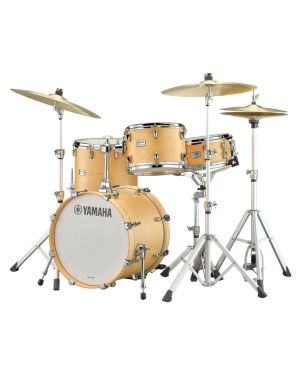
-
![Yamaha Vintage Natural Absolute Hybrid Maple 20x16 Bass Drum]() In Stock
In Stock -
![Yamaha Live Custom Hybrid Oak 22x18" Bass Drum in Ice Sunburst]() In Stock
In Stock -
![Yamaha Live Custom Hybrid Oak 22x18" Bass Drum in Natural]() In Stock
In Stock -
![Yamaha Live Custom Hybrid Oak 22x18" Bass Drum in Magma Sunburst]() In Stock
In Stock -
![Yamaha Tour Custom Chocolate Satin 22x16" Kick Drum]() In Stock
In Stock -
![Yamaha Tour Custom Candy Apple Satin 22x16" Kick Drum]() In Stock
In Stock -
![Yamaha Tour Custom Caramel Satin 22x16" Kick Drum]() In Stock
In Stock -
![Yamaha Tour Custom Chocolate Satin 20x15" Kick Drum]() In Stock
In Stock -
![Yamaha Tour Custom Licorice Satin 20x15" Kick Drum]() In Stock
In Stock -
![Yamaha Tour Custom Candy Apple Satin 20x15" Kick Drum]() In Stock
In Stock -
![Yamaha Tour Custom Caramel Satin 20x15" Kick Drum]() In Stock
In Stock -
![Yamaha Tour Custom Butterscotch Satin 20x15" Kick Drum]() In Stock
In Stock -
![Yamaha Tour Custom Licorice Satin 18x14" Kick Drum]() In Stock
In Stock -
![Yamaha Tour Custom Candy Apple Satin 18x14" Kick Drum]() In Stock
In Stock -
![Yamaha Tour Custom Chocolate Satin 18x14" Kick Drum]() In Stock
In Stock -
![Yamaha Tour Custom Butterscotch Satin 18x14" Kick Drum]() In Stock
In Stock -
![Yamaha Tour Custom Licorice Satin 22x16" Kick Drum]() In Stock
In Stock -
![Tama Starclassic Maple 22 X 18" Black Clouds And Silver Linings]() In Stock
In Stock -
![Tama Starclassic Maple 22x18 Bass Drum Flat Black]() In Stock
In Stock -
![Tama Star Walnut/birch 20 x14 Bass Drum Red Oyster]() In Stock
In Stock -
![Tama Star Maple Bass Drum 22 x 16 Satin Antique Brown]() Pre-Order
Pre-Order -
![Tama Star Maple 20 x 14 Bass Drum Solid Candy Red]() Pre-Order
Pre-Order -
![Yamaha Live Custom Hybrid Oak 22x18" Bass Drum in Charcoal Sunburst]() Pre-Order
Pre-Order -
![Yamaha Live Custom Hybrid Oak 22x18" Bass Drum in Earth Sunburst]() Pre-Order
Pre-Order
What are the main differences between a bass drum and a kick drum, and how do I choose the right one?
The terms "bass drum" and "kick drum" are often used interchangeably, but there are some distinctions:
- Bass Drum: This term generally refers to the large drum in both acoustic and electronic drum kits, designed to produce deep, low-frequency sounds. In orchestral settings, a bass drum is typically played with a mallet and produces a resonant, booming sound.
- Kick Drum: This term specifically refers to the bass drum in a drum kit, played with a pedal. It’s designed to deliver a sharp, controlled low-end sound that complements the rest of the kit.
- Choosing the Right One: Consider the size and type of drum that best fits your style. For rock and metal, larger bass drums (22" or 24") provide a powerful sound, while smaller drums (18" or 20") offer a more focused tone. For orchestral or jazz settings, a bass drum with a different depth and head configuration might be preferred.
How do I properly tune and maintain my bass drum for optimal sound and performance?
Tuning and maintaining your bass drum involves the following steps:
- Tuning: Use a drum key to adjust the tension of the drumheads. Start by loosening the tension rods, then evenly tighten them in a star pattern to ensure uniform tension. Experiment with different tensions to achieve the desired pitch and resonance. The batter head (the one you strike) and the resonant head (the one facing away from you) can be tuned separately for different sound characteristics.
- Maintenance: Regularly check the drumheads for signs of wear or damage and replace them as needed. Clean the drumhead and shell with a dry cloth to remove dust and debris. Ensure that all hardware, including the pedal and hoop, is securely attached and functioning properly. Lubricate moving parts if necessary.























